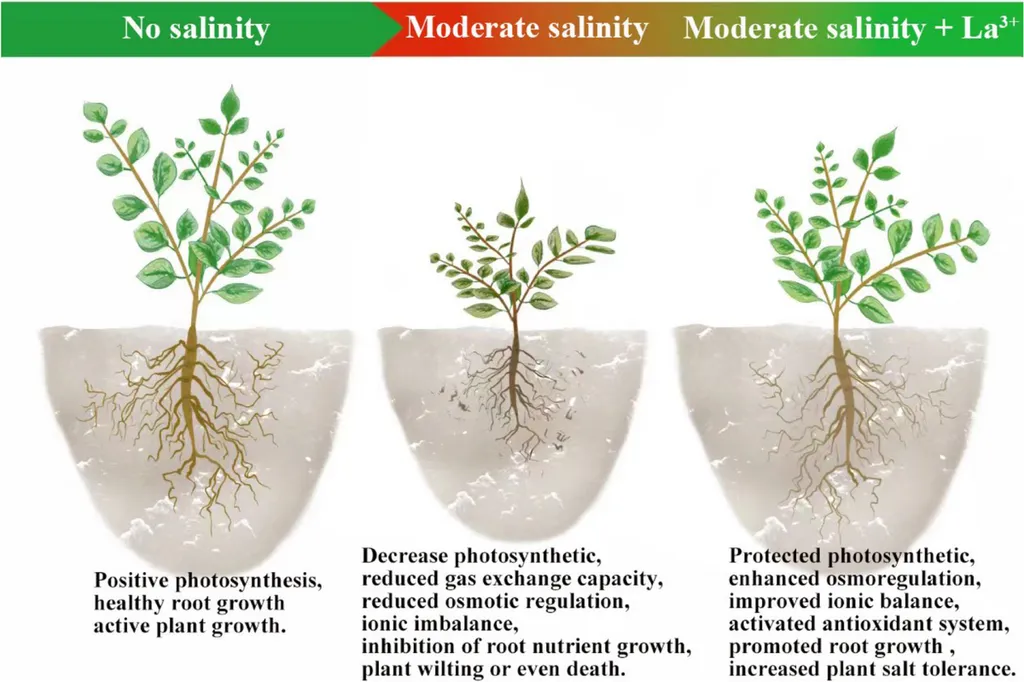In the arid landscapes of Xinjiang, China, a humble plant known as Glycyrrhiza uralensis, or licorice, faces a formidable foe: salt stress. This stress severely inhibits the seedling growth of licorice, limiting its cultivation in saline-alkali soils and posing a significant challenge to the agricultural sector. However, a recent study led by Min Shang from the College of Life Sciences at Shihezi University has uncovered a promising solution: lanthanum nitrate (La(NO3)3).
The study, published in *Frontiers in Plant Science* (translated to “Plant Science Frontiers”), reveals that under salt stress, the photosynthesis, anti-oxidative stress, growth, and relative content of pharmacological active components of G. uralensis are significantly inhibited. However, the application of 0.75 mM exogenous La(NO3)3 treatment has shown remarkable results. “Under this treatment, licorice under salt stress exhibited photosynthetic compensation recovery, activation of antioxidant defense, and synergistic improvement of biomass and medicinal quality,” Shang explains.
The implications of this research are profound, particularly for the energy sector. Licorice is not just a medicinal plant; it’s also a valuable resource for bioenergy production. By alleviating salt stress, we can enhance the plant’s growth and yield, thereby increasing the availability of biomass for energy production. This could contribute to the development of sustainable bioenergy systems, reducing our dependence on fossil fuels and mitigating climate change.
But the innovations don’t stop at the application of lanthanum nitrate. Shang’s team has also developed a predictive model for assessing plant stress responses. The NRBO-LSSVM-ABKDE coupling prediction model, as it’s called, offers a powerful tool for predicting the mitigative effects of La(NO3)3 on G. uralensis. “Its prediction accuracy is significantly better than the traditional algorithm,” Shang notes, highlighting the model’s potential for guiding future agricultural practices.
This research not only confirms the efficacy of La(NO3)3 in alleviating salt stress in G. uralensis but also provides a new strategy for sustainable agriculture in salt-affected areas. As we face the challenges of climate change and food security, such innovations become increasingly important. They offer a glimpse into a future where technology and agriculture intersect to create more resilient and sustainable food systems.
The study’s findings could shape future developments in the field, encouraging further research into the use of rare earth elements in agriculture and the development of predictive models for plant stress responses. As Shang puts it, “This is just the beginning. There’s so much more to explore and discover.” And with each discovery, we move one step closer to a more sustainable and secure future.

